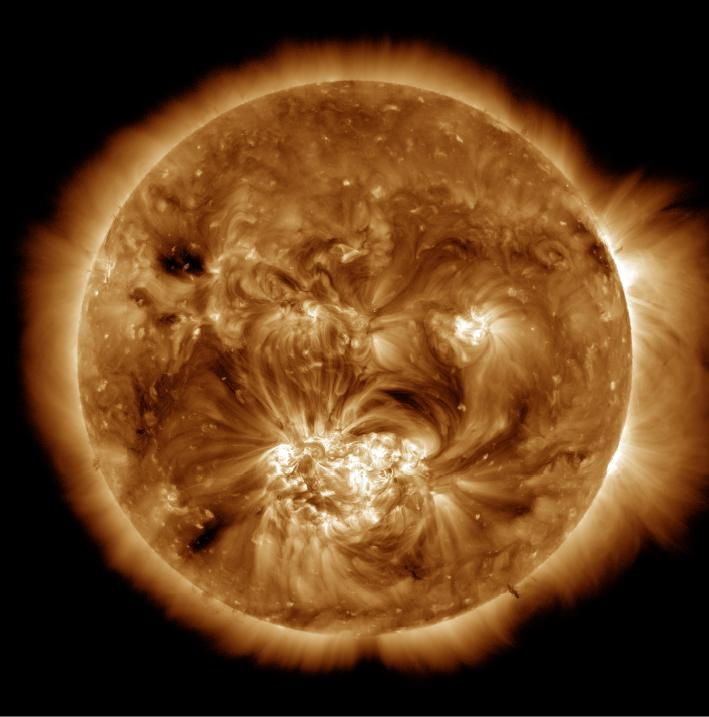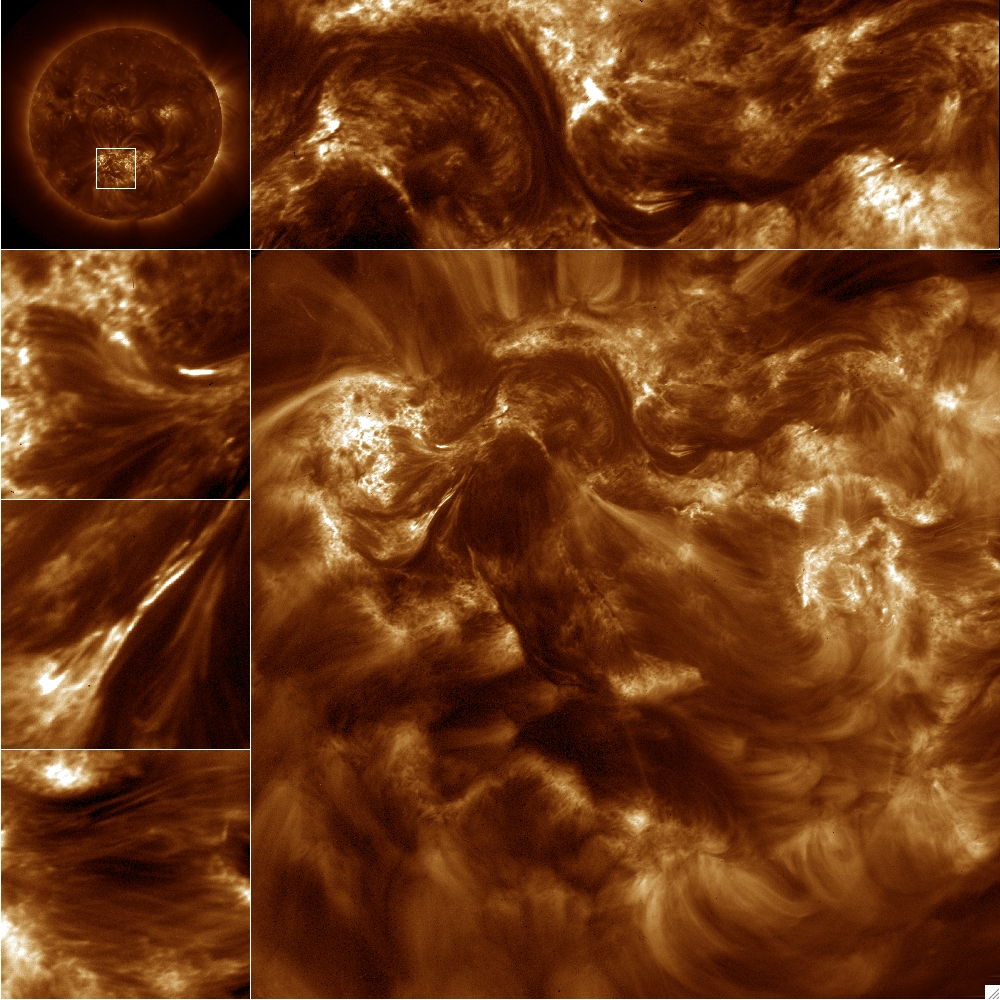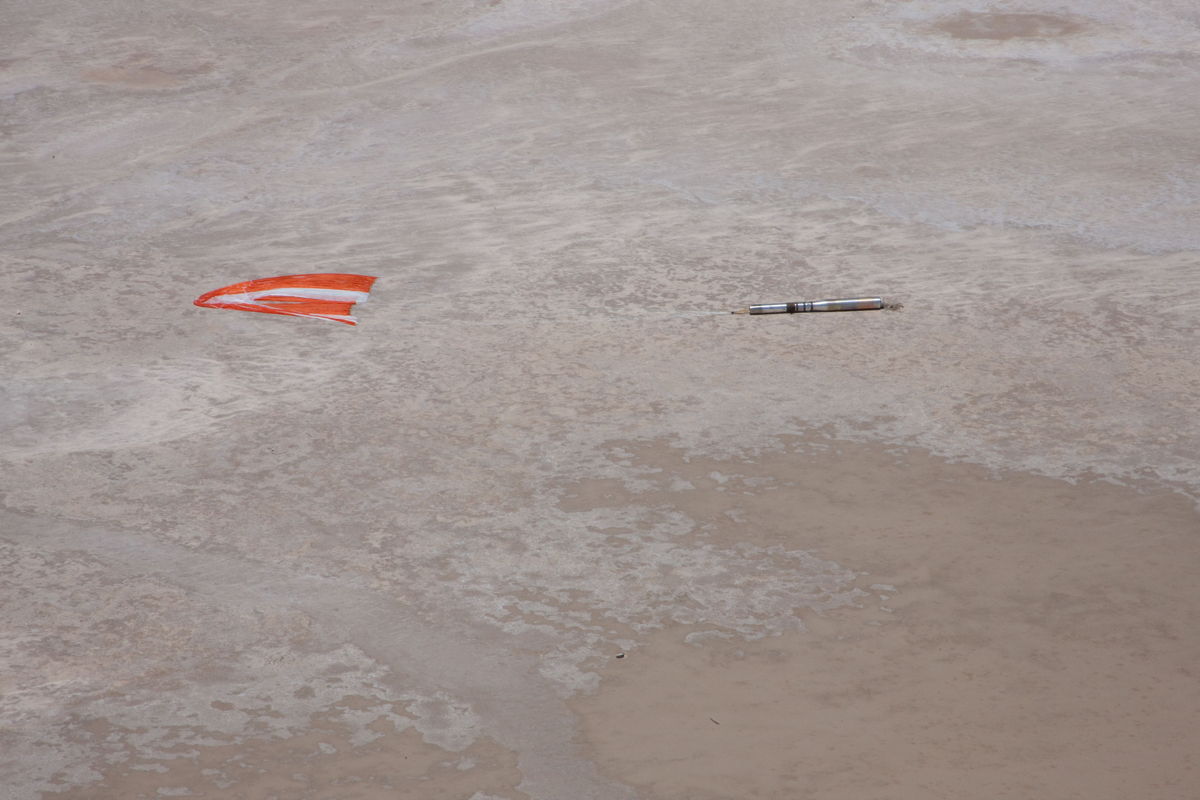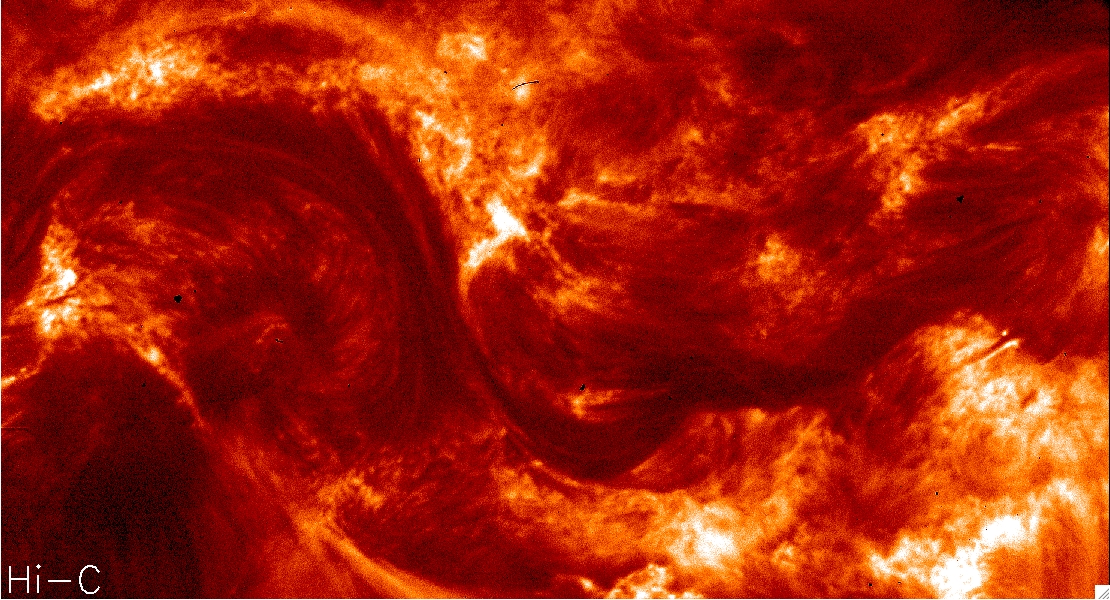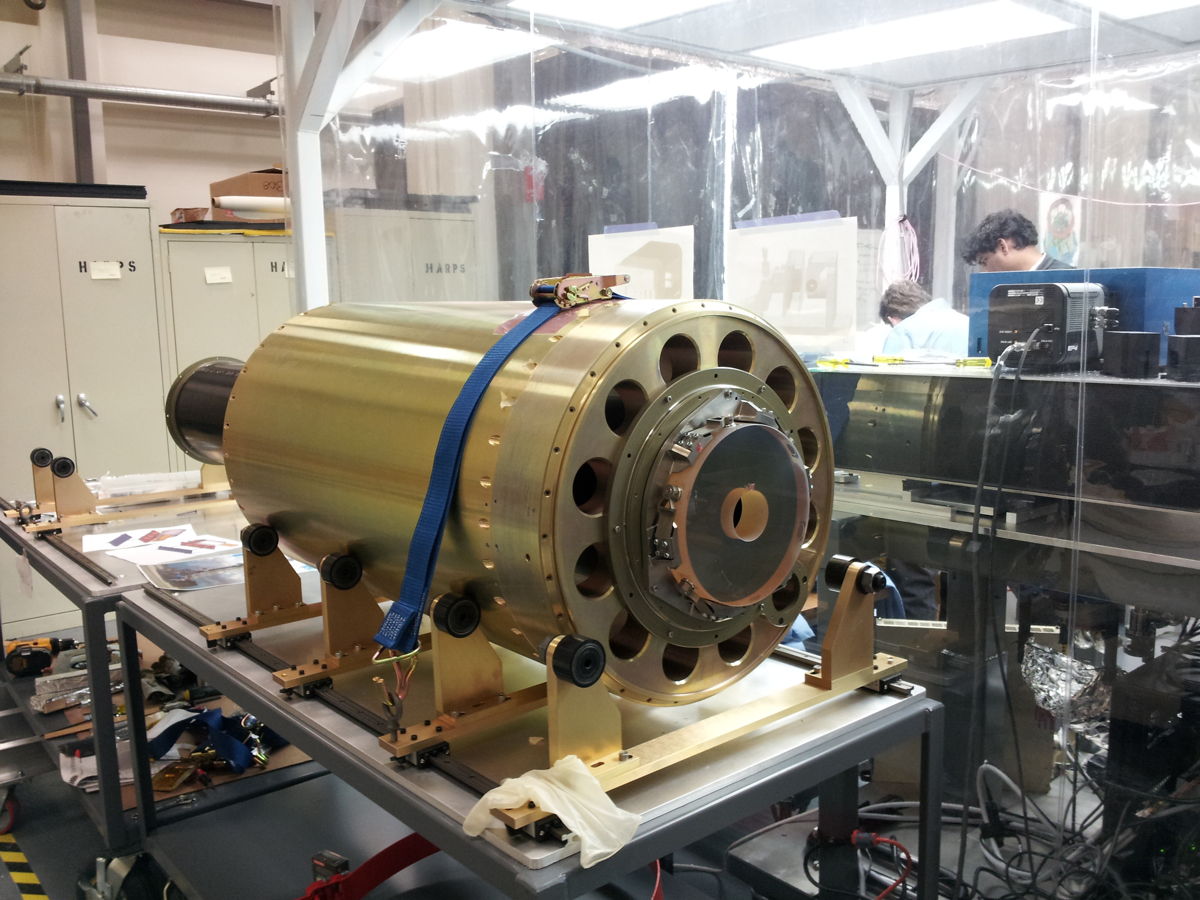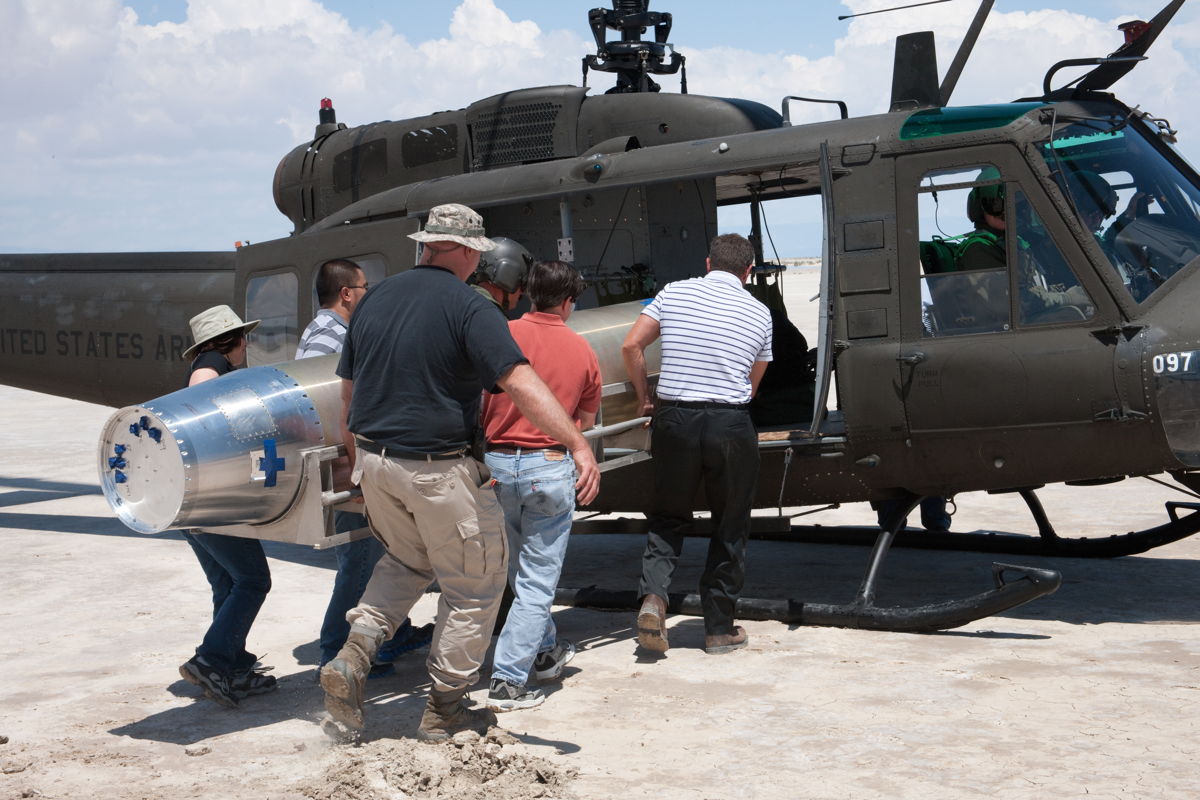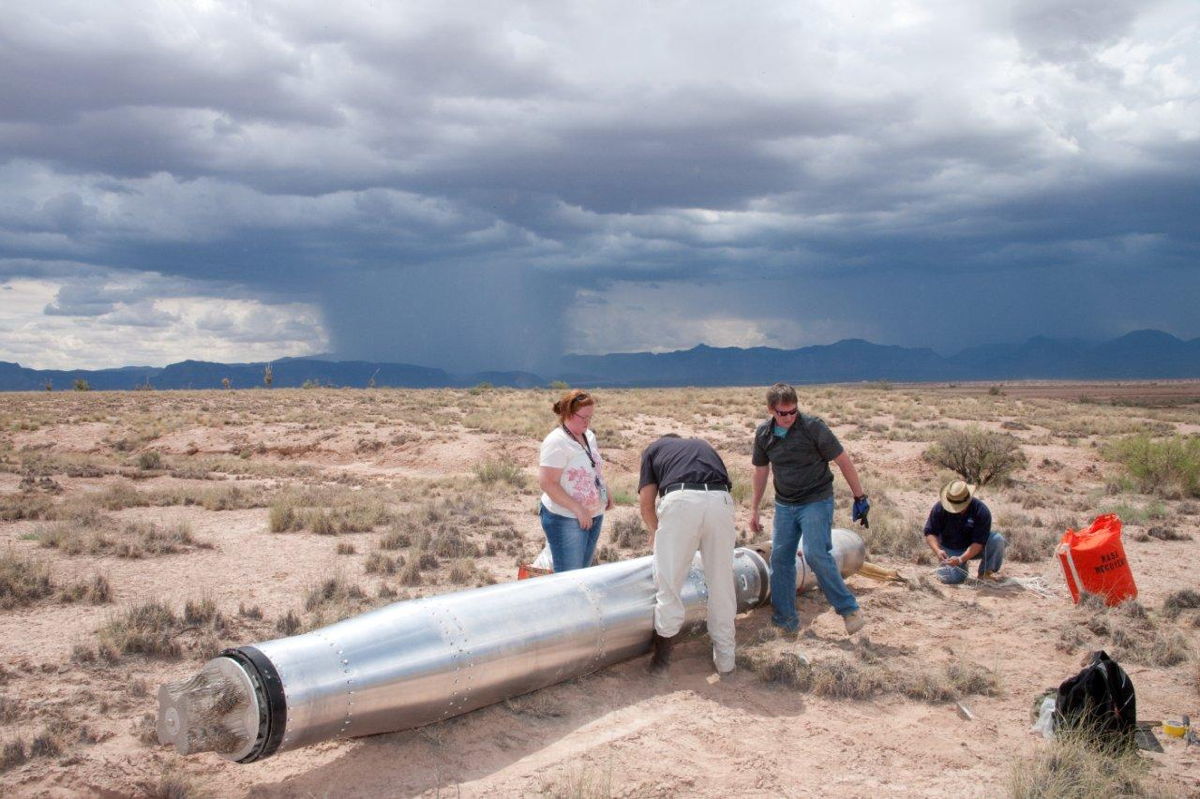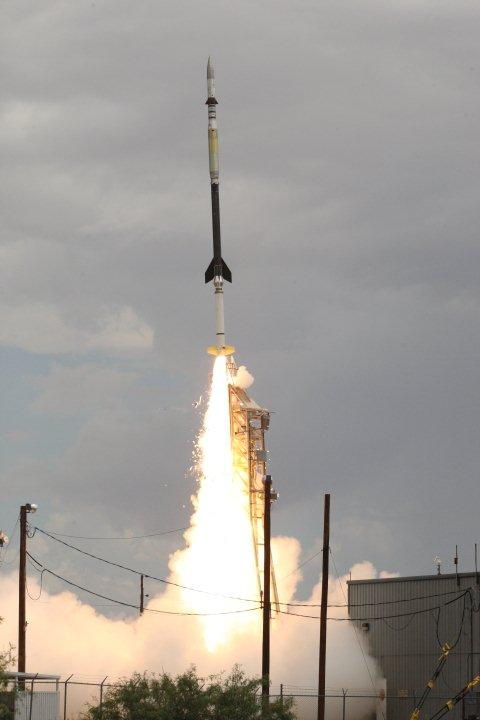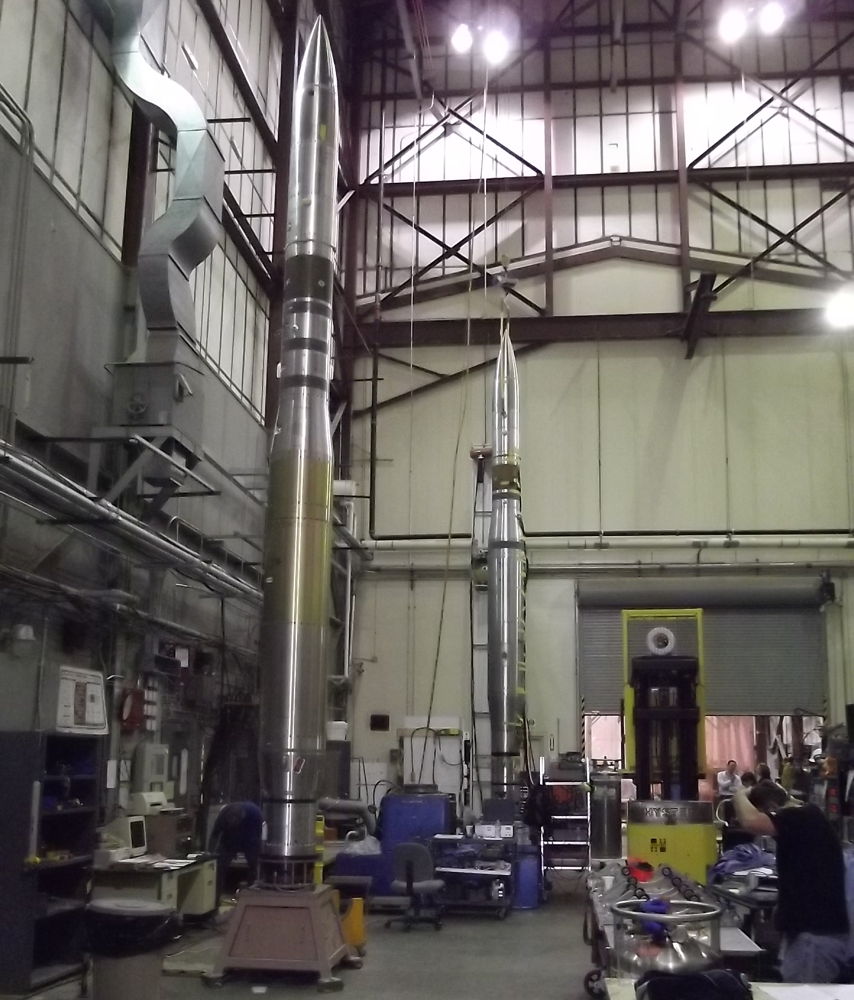The Sun Revealed: Photos of the Million-Degree Solar Corona
1.5 Million-Degree Solar Atmosphere
The Atmospheric Imaging Assembly on the Solar Dynamics Observatory captures images of the sun's corona. This image shows the 1.5 million-degree solar atmosphere and is taken at the start of the Hi-C sounding rocket observations. Released Jan. 23, 2013.
Magnetic Braids on the Sun
NASA's High-resolution Coronal Imager (Hi-C) capture over 50 16-Megapixel images of the 1.5 million-degree solar corona. The large image is the full frame image and the smaller images along the top and sides are sub fields of the image. The upper left corner image is from the Atmospheric Imaging Assembly on the Solar Dynamics Observatory and the box in this image shows the Hi-C field of view. Released Jan. 23, 2013.
WSMR NASA Team
A contingent of the NASA team recovers the Hi-C payload from the New Mexico desert. The small Hi-C telescope captured spectacular high-resolution images of the sun's corona in July 2012.
High-Resolution Coronal Imager (Hi-C) Payload
NASA's High-resolution Coronal Imager (Hi-C) payload rests in the White Sands, New Mexico desert after returning to Earth. The payload reached 283km altitude and collected 345 seconds of science data of the solar atmosphere.
The Sun's Corona Seen by NASA's Hi-C Telescope
NASA's High Resolution Coronal Imager telescope, or Hi-C, captured this high-resolution shot of the sun's outer atmosphere during a 10-minute suborbital spaceflight on July 11, 2012.
Hi-C Instrument
The Hi-C instrument on the integration table at the Harvard-Smithsonian Center for Astrophysics. Image released Jan. 23, 2013.
Hi-C Payload Recovery
The recovering team poses for a photo with the payload before loading the instrument in a pair of U.S. Army Helicopters and returning to base. From left: Eduardo Legman (Wallops FLight Facility/NASA, Ken McCraken (Harvard-Smithsonian), Dr. Jonathan Cirtain (MSFC/NASA); Dyana Beabout. Image released Jan. 23, 2013.
Breaking space news, the latest updates on rocket launches, skywatching events and more!
SUMI Sounding Rocket Payload
SUMI Sounding rocket payload being readied for loading in the helicopter. Image released Jan. 23, 2013.
Hi-C Launch
The High resolution Coronal Imager (Hi-C) was launched on a NASA Black Brant IX two-stage rocket from White Sands Missile Range in New Mexico July 11, 2012. The experiment reached a maximum velocity of Mach 7 and max altitude of 264 km. The experiment collected 345 seconds of EUV science images. Image released Jan. 23, 2013.
SUMI and Hi-C Payloads
MSFC, Wallops Flight Facility, NASA/White Sands and partners accomplished the amazing of launching not just one, but two science payloads in six days, July 5 and July 11, 2012. The SUMI and Hi-C payloads are seen in the integration facility at White Sands simultaneously being prepared for environmental testing. MSFC completed SUMI while SAO, UCLan and Lebedev contributed to the launch preparation activities along with the MSFC team for Hi-C. Image released Jan 23, 2013.
Team Members and Hi-C Rocket
Team members pose with the H-C sounding rocket. Standing, starting from left: Charlie Cathell (NSROC-LJT), Eduardo Legman (NSROC-OSC), Nicholas Mitchell (UCLAN), Todd Holloway (MSFC), Howard Soohoo (MSFC), Ken Kobayashi (UAH), Guadalupe Archuleta (Northrop Grumman), Amy Winebarger (MSFC), Brent Beabout (MSFC), Dyana Beabout (MSFC), Bernita Justis(NSROC-LJT), Kelly Korreck (SAO), Robert Walsh (UCLAN), Paul Harmon (NSROC-OSC), Sergey Kuzin (Lebedev Institute), Gerald Christeson (NSROC-OSC), Tim Wilson (NSROC-OSC), On the riser: Simon Platt (UCLAN), Martin Castro (NAVY), Nicholas Cranor (NSROC-OSC), Jonathan Cirtain (MSFC), Leon Golub (SAO). Image released Jan. 23, 2013.

Space.com is the premier source of space exploration, innovation and astronomy news, chronicling (and celebrating) humanity's ongoing expansion across the final frontier. Originally founded in 1999, Space.com is, and always has been, the passion of writers and editors who are space fans and also trained journalists. Our current news team consists of Editor-in-Chief Tariq Malik; Editor Hanneke Weitering, Senior Space Writer Mike Wall; Senior Writer Meghan Bartels; Senior Writer Chelsea Gohd, Senior Writer Tereza Pultarova and Staff Writer Alexander Cox, focusing on e-commerce. Senior Producer Steve Spaleta oversees our space videos, with Diana Whitcroft as our Social Media Editor.
